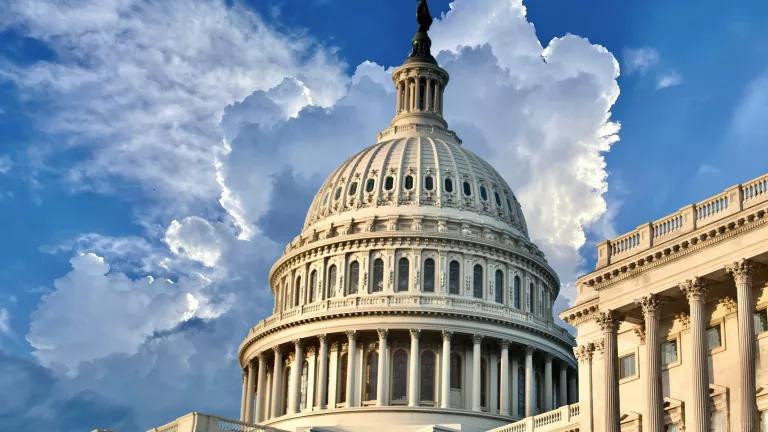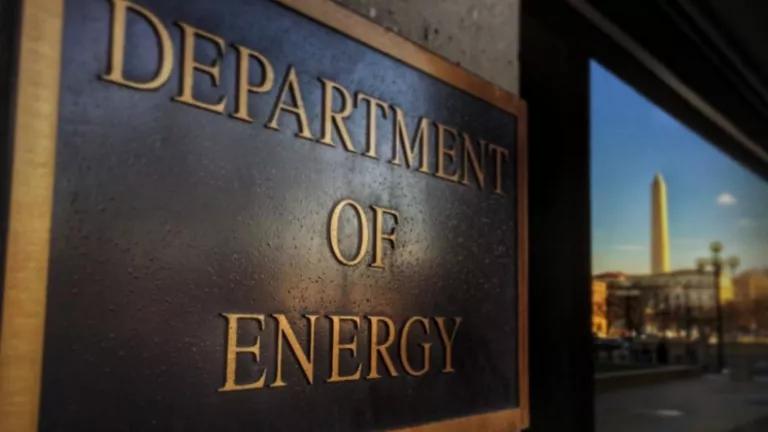
Despite current rhetoric, there is a history of bipartisan support for clean energy in America. I know, because I’ve been an advocate for 40 years and I’ve seen the progress – regardless of the party in power. We’ve been able to forge ahead because clean energy and clean air are what Americans demand. And, time after time, we have been outraged whenever politicians attempted to roll them back.
This bipartisan support even predates evidence that clean energy policies promote economic growth, innovation, and job creation—and they also enhance market forces. Another reason for bipartisan support is that clean energy policies reduce pollution and utility bills—things all Americans can support. Today, clean energy costs less than using dirty energy, which should appeal to fiscal conservatives and everyone else.
For all these reasons, people of all political persuasions should work together to ensure clean energy policies continue—no matter which political party is in power.
A brief history of bipartisan clean energy progress
As NRDC founder John Adams recounts in “A Force for Nature,” his history of the environmental movement, Republican President Richard Nixon was no green advocate and even put NRDC on his “enemies list.” But when Americans became outraged over industrial pollution, sparked by incidents such as toxins in the Cuyahoga River catching fire in my hometown of Cleveland in 1969, Nixon responded by creating the Environmental Protection Agency and signing legislation that created the framework for the Clean Air Act.
Clean energy became an issue during the oil crisis in the early 1970s when Americans faced long lines to fill their gas tanks, and paid triple the price to do it. Using energy more efficiently was a bipartisan response to polluting fossil fuels and the oil shortage. Both the Nixon Administration and the subsequent Ford Administration, along with the Democratic Congress, agreed on legislation to promote fuel economy standards in cars and the initial framework for federal energy efficiency standards for appliances and equipment.
In 1977, Congress created the Department of Energy, which President Jimmy Carter signed in to law. At the same time, bipartisan action was taking place in states, including New York, Massachusetts, and California, working with the federal government to promote energy efficiency and clean energy sources.
Clean energy promotes economic success
Forty years of advocacy have shown me (and anyone who looks at it seriously) that energy efficiency improves profitability for both big and small U.S. businesses. It provides almost 2 million jobs and protects the climate. Renewable energy provides another 400,000 jobs. Job creation and economic development are bipartisan policies that advance both worker and business objectives.
Fundamentally, clean energy is a politically conservative goal. One conservative principle is that government should reward good behavior and penalize bad. Dirty energy damages the planet and shortens lives, so it makes sense to have policies that reduce pollution. Conservatism also favors efficiency: making do with less when the outcomes are just as good.
California leadership
California has the nation’s strongest clean energy policies, but few remember that the California Energy Commission was created in 1974 under then-Governor Ronald Reagan. California adopted the nation’s (and I believe the world’s) first appliance efficiency standards. Soon thereafter, under the leadership of Republican Governor George Deukmejian, the state adopted the first performance-based energy efficiency codes. This is how California stopped the growth of per-household electricity consumption in 1975, while it grew in the rest of the country.
Bipartisan support for energy efficiency in Congress
President Ronald Reagan made terrible appointments to EPA and the Department of Interior and sought to undercut U.S. environmental laws (mostly unsuccessfully). He also initially was hostile toward energy efficiency, possibly because he felt that “efficiency” helped end nuclear power construction in California in the 1970s. In fact, Reagan asked Congress to repeal the authority for appliance standards. When that initiative met resistance, his administration simply ended activity on standards.
NRDC wasn’t about to let that lie. Joined by states, consumer groups and efficiency advocates, we sued DOE for failure to meet statutory deadlines, knowing that even after we won we would likely have to sue again on the merits because the DOE would probably set standards too low (which they did). At that time, we also petitioned the California Energy Commission to set standards for refrigerators and air conditioners that were so stringent that more than 90 percent of them needed to be redesigned.
In the end, manufacturers rose to the challenge. Not only did they meet the standards but they went beyond them (helped by utility-provided incentives) while reducing the cost of their products. These products were globally competitive, helping U.S. industry retain production and jobs.
These successes, and the fear that states might create a patchwork of inconsistent rules, led to bipartisan support for federal standards legislation which caused President Reagan to change his position. When Congress passed the bipartisan National Appliance Energy Conservation Act in 1987 with support from a wide variety of business and public interest organizations, he signed it into law. This legislation, and following bipartisan laws, requires the Department of Energy to establish strong energy efficiency standards for dozens of household, commercial, and industrial appliances and products, and required DOE to periodically update the standards by specific deadlines.
Congress has since expanded the program numerous times, with amendments adopted under both Bush presidencies. These were adopted in majority-Republican chambers as well as Democratic-majority ones, and collectively have saved more than $2 trillion for consumers and businesses. The most recent example is the 2007 Energy Independence and Security Act signed into law by President George W. Bush, which included historic lightbulb standards adopted by the Republican House and Senate, as well as improvements to the vehicles fuel economy program.
I also worked with Congress to create tax incentives for efficient buildings and appliances beginning in 1998, with adoption of most of our goals in 2005. Republicans understood the value of performance-based incentives and were strong in their support.
Prospects for the future
President-elect Trump has said little about clean energy, although he has made statements about “canceling” the Paris Climate Agreement and made incorrect comments about the cost and location of jobs of solar and wind power. And many of his transition leaders and appointees are climate skeptics with appalling records. His pick to lead the Department of Energy, former Texas Governor Rick Perry, wanted to eliminate the agency.
But Trump also has talked of reducing the high cost of energy, which can be done better with efficiency than with supply. And the clean energy agenda is one of the few programs - left or right - that can create jobs.
As a new era in Washington begins, NRDC will continue to work with any office holder who will work with us. But if the new administration attempts to dismantle America’s clean energy, climate, and environmental laws, NRDC will use every strategy it has to fight back, as we have always done. And I will be there to fight for that progress, too.



